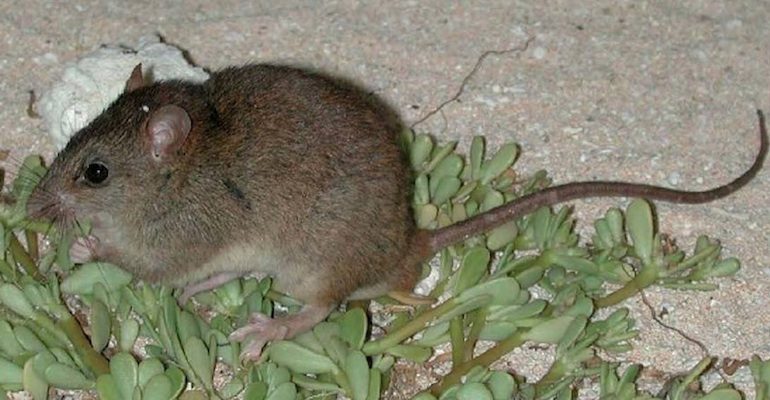
Scientific name: Melomys rubicola
Conservation status: Extinct
Where did the Bramble Cay melomys live?
Before the Bramble Cay melomys went extinct, it use to live in the northern edge of the Torres Strait Island of Queensland, Australia.
A brief history of the Bramble Cay melomys
This little rodent was originally discovered in 1845 by a group of European crew ship. They stated that the island seemed overpopulated with this critter, and described them as “large rats”. During their brief visit, they spent their time killing them for fun. It wasn’t until 1924 that this critter was given its scientific name (Melomys rubicola).
When and what caused the extinction of the Bramble Cay melomys?
This critter was confirmed as extinct in June 2016. Researchers from the University of Queensland stated that the extinction of the Bramble Cay melomys was due to numerous factors, such as the introduction of exotic plants, predators, competitors (green turtles and seabirds) and diseases from people that visited the island.
However, researchers have argued that the most likely cause for their extinction was due to climate change. Due to the increase of sea level, this lead to a loss of habitat and coastal erosion.
Although, researchers originally feared the extinction of this mammal may have occurred before 2016. They were unable to find evidence of a Bramble Cay melomys’s faeces, skeletons or nests between 2011 and 2014. Researchers had hoped to find traces of this animal, but waited until 2016 to confirm its extinct classification.
Where and when did the Bramble Cay melomys sleep?
Like all rodents, the Bramble Cay melomys was a nocturnal critter, who spent its sleeping time in burrows and under logs.
How long did Bramble Cay melomys use to live?
It was estimated that this creature could have lived at least two years in the wild.
The Bramble Cay melomys diet
The diet of the Bramble Cay melomys was not exclusively investigated. However, it was reported that its diet was mostly vegetation, such as the Portulaca oleracea plant, and whenever the opportunity presented itself, turtle eggs was a delicacy.

No Comments